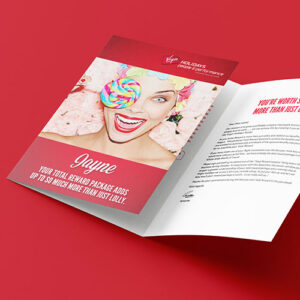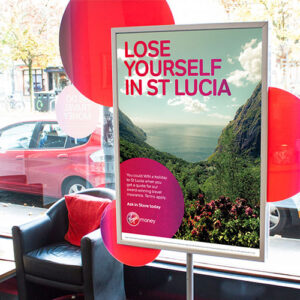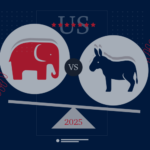In Chess, you may get lucky and win by chance, just by playing by the basic rules. However, a player who is an advanced opponent (who’s done their research and has a strategy in place) is more likely to win every time. This could be said about your business branding.
To create a powerhouse business and brand, you need to create a connection with your target audience and have an authentic understanding behind your product to stand out. It’s not enough to just have a logo or a catchy tagline; it’s the very essence of your company’s identity. Effective branding can set you apart from your competitors, encourage trust among cosumers, and leave a lasting mark.
Whilst branding has existed for centuries, the concept of a formal brand strategy emerged in the early 20th century. Many individuals and companies have played a significant role in shaping brand strategies but one of the earliest was Harley Procter. A co-founder of Procter & Gamble, Harley emphasized the importance of building a strong brand identity through quality products, consistent messaging, and effective marketing.
In this blog we’ll go through the importance of having a Brand Blueprint and how, at Proteus, we work with you to make things happen.
Recent Posts
What do we mean by a brand blueprint?
A brand blueprint is a document that outlines the fundamental elements of a brand. From its core purpose and values to its visual identity and brand guidelines. It serves as a roadmap, ensuring consistency in all brand-related communications and design.
What is the purpose?
A brand blueprint serves several key purposes:
- Defines character: It clearly expresses the brand’s mission, vision, values, and personality, providing a foundation for all brand-related decisions.
- Consistency: It acts as a central reference point for aligning the brand across all touchpoints, from website and marketing materials to customer interactions.
- Differentiation: It provides a plan for creating compelling brand stories that resonate with consumers and reinforce the brand identity.
- Growth: It serves as a foundation for future growth and evolution, ensuring that the brand remains relevant and resonates with its target audience.
- Brand alignment: It promotes alignment among the employees, stakeholders, and partners, ensuring that everyone within the organisation is speaking from the same page and looks and feels the same.
Creating a structure
A brand blueprint typically includes the following elements:
- Brand Mission: The core purpose of the brand and its reason for existence.
- Brand Values: The guiding principles that shape the brand’s behaviour and decision-making.
- Brand Persona: Describes the brand’s personality and how it should be expressed in communication and interactions.
- Target Audience: Defines the specific customer segments the brand aims to reach.
- Brand Positioning: Positions the brand in the market and differentiates it from competitors.
- Messaging Strategy: The key messages that the brand communicates to its audience.
- Brand Voice: Establishes the tone and style of language used to communicate with target audiences.
- Brand Identity: Defines the brand’s visual identity, including logo, typography, colour palette and brand guidelines.
How do other brands use their brand blueprint effectively?
We will now look closely at some examples in our work, guided by a stellar brand blueprint.

Virgin
We’ve been fortunate to work alongside Virgin on several projects. A maverick global brand spanning five sectors, five continents, and 40 companies, Virgin provides a great example of how to communicate brand values, mission, personality, and design. Guided by only three ‘brand identity guardrails’ across all sub brands, they are instantly recognisable, have a celebrated reputation, with great client feedback and colleague retention.
Virgin’s Mission: ”At Virgin, we create unique customer experiences, challenge the status quo and champion people and the planet. For five decades, in five business sectors and on five continents, our purpose is to change business for good.”
Values: “Virgin’s purpose is to change business for good and it is the very reason we exist. It is the lens through which we make all our decisions. Our values are what keep our people, products, and partners on the right path to achieve our purpose while providing incredible experiences.”
Persona: Pioneering, bold, fun, surprising, straight-talking, entrepreneurial.
Target Audience: As Virgin have many sub brands, the target audience varies. For example, Virgin Atlantic’s target audience is the business traveller.
Brand voice: Again, this can vary according to sub brand, each having a slightly different tone, but the overall voice remains consistent. Straight-shooting and witty. Virgin Atlantic for example uses a formal, funny, respectful, and enthusiastic tone. It combines professionalism with a touch of wit in its communications about travel experiences. This charismatic approach helps convey its commitment to enjoyable and high-quality air travel.
Identity: The brand’s original logo was designed by Roger Dean in 1970. Roger was actually a furniture designer when Richard Branson asked him to design Virgin Records very first logo. The design featured naked Siamese twins sitting next to a twisted tree for a Virgin Record – it bore all the hallmarks of a psychedelic rock album. Then seven years later Virgin signed punk band the Sex Pistols, so the team decided they needed a logo which was more versatile and would better suit. The logo was originally scribbled on the back of a napkin by an agency called Cooke Key – and the Virgin logo as we now know it was born.
These days… “Virgin puts people first, focussing on design that is inclusive, accessible, and welcoming to all. We also have a sharp focus on design that is as sustainable as it is exceptional.” Virgin also use sub brand logos under the overarching Virgin brand logo to remain versatile to the specific target audiences.
These combined elements and strategies put Virgin in a strong position in the market – differentiating them from their competitors!



Need help being different?
Here at Proteus we like to make things happen. We use three steps to create a successful brand and blueprint:
- Gather insight
- Picture the future
- Find the difference.
Proteus work with you to understand your objectives, develop a clear proposition that differentiates you from your competitors and then plan, create and seamlessly deliver your communications. We do this by challenging preconceptions, and simplifying the complex while understanding how the latest technology and consumer behaviour trends impact your customers, and how they interact with your brand.











